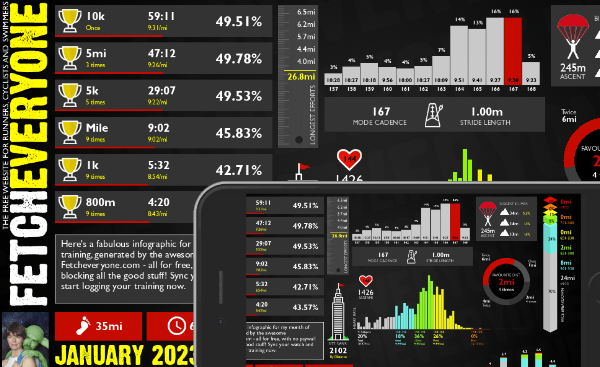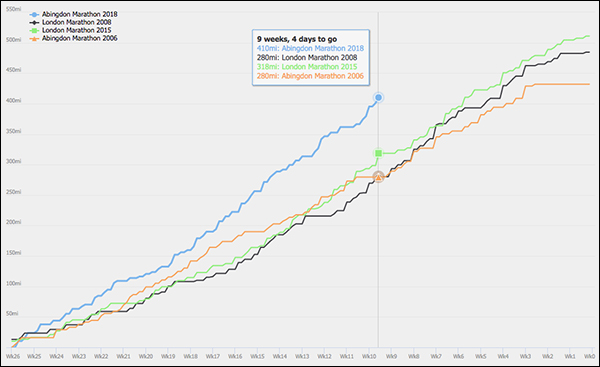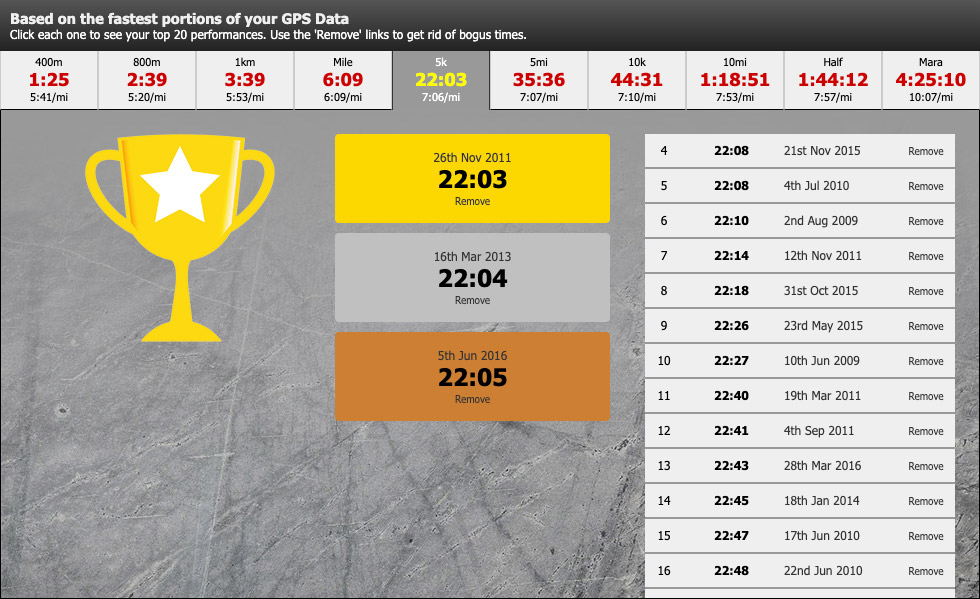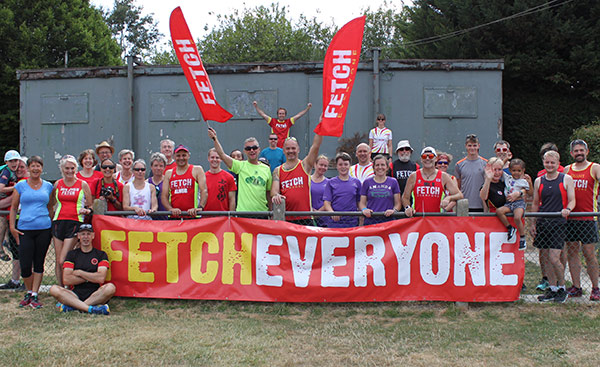Make your own Training Plan
Do what's right for you.

Thumb through any running magazine, and you'll find a selection of plans designed to help you achieve your goals. If you look at enough of them, you'll start to see some familiar patterns emerge. This shouldn't be a surprise, because all good plans are based on the core principles of training - rules that apply whether you're a greenhorn or a grizzled vet. Taking some time to understand these underlying guidelines will give you the confidence to start tweaking these plans to suit your needs, or even to build your own bespoke plan.
No matter what your standard is, the first thing you need to decide is how much time you can commit to your running schedule per week. We all know what happens when you start a big fitness drive, starting off like a nutcase before ploughing head first into failure a few weeks later. Don't run before you can run-walk. Be realistic, be consistent, be habitual, be committed, and avoid the 'boom and bust' approach at all costs.
When you've settled into a pattern of going out on a regular basis, you can start to look at a gradual increase in the amount of work you're doing. Building a strong foundation of mileage so that you can run comfortably for long periods of time is not just a great mental boost, it helps to tune up your cardiovascular system, and helps your body to run efficiently. It's not about doing it quickly at first, it's about making it as solid and regular as you can.
An extra half a mile added to runs here and there each week will soon add up. There's a pretty strong correlation between training mileage and race performance, so for a lot of runners, increasing mileage is a simple way to reduce your race times, and if you're new to running, you'll have a lot of fun with it. But don't get over-ambitious - next month's mileage should never be more than 10 per cent higher than the current month.
Eventually you'll reach a tipping point where increasing your mileage doesn't make you race faster, it just makes you more tired and susceptible to injury. This is a good point for your training to focus more on quality - rather than just 'going out for a run', you have a specific goal or purpose for each workout, whether that's a long run to build endurance, tempo and intervals to boost speed or easy runs to aid recovery.
Start by staking out your long run day. Most people prefer weekends because there's plenty of time to rest up beforehand, and to veg out afterwards - but if Wednesday mornings work best for you, then that's fine. Build up the distance slowly, and take them at a gentler pace than you normally run to stimulate your fat-burning systems. For marathons, peaking around 20 miles is good - any more and you compromise the rest of your training. For shorter races, time on your feet is still important - even for a 5k you can look at nudging your long runs up to at least 90 minutes.
You may find that carving out a longer run will in itself be enough to keep you improving. But if you find yourself on a plateau again, it's time to look at introducing a weekly speed session. Ease into it. One a week is plenty to begin with, and should get you moving faster whilst avoiding excessive load on your body.
Lactate threshold runs (aka 'tempo runs') stimulate your muscles to utilise lactate, which is produced when they break down carbohydrates. Judging pace is key - if you go too slowly, you won't create a build up of lactate, and if you go too fast, you'll grind to a halt before your body has had a chance to think about things. Over the course of your training plan, you can build up your tempo runs to 20-30 minutes. After a warm up mile, aim for around 15-30s slower than your 10k pace, or if you use a HRM, try 85% of your working heart rate.
In the same way, interval sessions help to improve the maximum rate at which your body can use oxygen, so unfortunately you have to run at a pace where you are trying to breathe through every orifice. For most of us, this is somewhere between mile pace and 5k pace. Clearly it's hard to sustain this for very long, which is why the recoveries are important. Rest between efforts enables you to amass a greater volume of training than if you run full tilt to exhaustion.
Whichever elements you choose to incorporate, take a realistic approach. It's far more enjoyable to see a small amount of progress each month than it is to over-reach and get demotivated or damaged. If you're eager to be active between training days, swimming; biking; core workouts and other cross training can help strengthen your body whilst avoiding the stresses of running.
As you gradually increase your training load, so the need for proper recovery and the importance of listening to your body becomes greater. As far as you can, try to spread your runs out through the week, scheduling rest days or easy runs before and after your quality sessions where possible. Build recovery in on a larger scale too, scheduling an easier week once a month - prune back your long run and cut out or reduce the intensity of your speed sessions. It will give your body that little bit more time to adapt to the increasing load.
If you treat your speed sessions and longer runs with reverence, then it follows that you should do the same when it comes to racing. There's no need to stop running, but it's wise to taper your efforts back during the week of the race to ensure you're fresh and mad for it. As a rule, the longer your race, the greater the taper - so your peak training effort for a marathon should be at least three weeks before race day.
When your race is run, and thoughts turn to your next outing, it's very useful to be able to look back on how your training plan went. So before you even begin, start making notes and recording as much information as you can in your training log and your blog. It can give you plenty of clues to help tune up your strategy. It can highlight whether you missed more sessions than you are willing to admit, or conversely, it can motivate you to read about previous occasions when you overcame problems. Have fun!

Picture: Getty Images / Tim Flach
| Mile Pace | |
| 5k Pace | |
| 10k Pace | |
| Half Marathon Pace | |
| Marathon Pace |

Monthly Summary
A brand new shareable infographic showing a colourful breakdown of your training month.

Marathon Prediction
We delve deeper to give you greater insights when working out your goal marathon time.

Pre-race Training Analysis
See your accumulated mileage in the weeks leading up to any event in your portfolio, and compare it to your other performances

Your 365 Day Totals
Peaks and troughs in training aren't easy to find. Unless you use this graph. Find out what your peak training volume really is

Benchmarks
See the fastest portions from all your training runs. Filter by time to give you recent bests to aim at. Every distance from 400m to marathon.

Fetch Everyone Running Club
Join our UKA-affiliated club for event discounts, London Marathon ballot places, the chance to get funded for coaching qualifications, and a warm feeling inside.

Leave a comment...
-
Great stuff as ever Fetch. Funny, weekatiepea just asked this question. Gonna ping her a link! :-)G
HappyG(rrr)
-
Chapeau!

Angus Clydesdale
-
thanks once again fora timely reminder - no intevals speed work or anything for me - will just keep plodding the miles

colettedeann
-
Thanks Fetch. Really helped me.

-x-x-
-
very good article, now where are my running shoes?
DrBob
-
BRILLIANT! :D
jog-on
-
Nice article but in the pacing box you may want to include more hour choices, it doesn't go beyond 2.
Woffy
-
Whoops, ta.
fetcheveryone
-
Great stuff.
GlennR
-
Splendid


Sunbed Athlete
-
Nice one:)
Hyperboy
-
Cracker
Rosielad
-
Great article...and something I've been looking for in a while, as I tend to run myself into the ground by accident.
Garfield
-
I like the way you've put quite complex training stages into easy to understand language. You've explained the foundation stage brilliantly, then the next 2-3 stages are Tempo and vo2 then the race.
milemonster
-
Like it, am going to be designing my own training plan for a marathon in october so some really useful information here around training paces

*Anj*
-
Useful advice thanks.

Ness
-
Always been confused by the use of the word 'threshold'. Now I'm not - thanks, Fetch

J123
-
Very helpful - love the pacing gizmo

Autumnleaves
-
Really good article and just the nudge I needed after a bad 5miel race at the weekend! Thank you.
TheRoadie
-
Useful and shared....
RFJ
-
Basics clearly explianed
mcguckin
-
i have just reread this t get my head around adding tempo/hills/speedwork - many months later and have something different to take away from it

colettedeann
To comment, you need to sign in or sign up!One thing I've found is making your own training plan is best if you have the basics right and you've got them covered here.
A good book I'd recommend, most runners have probably already read it, is the Daniels Running Formula. It's my running Bible.